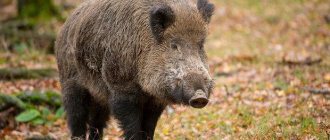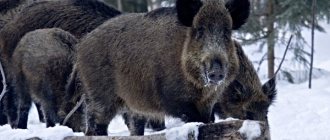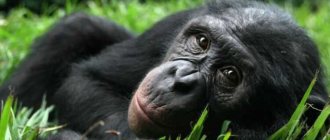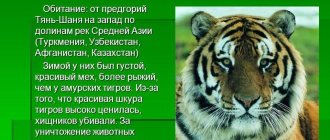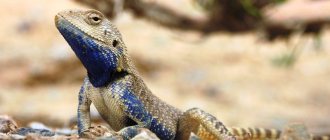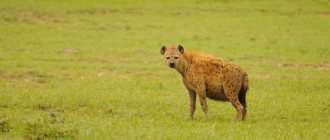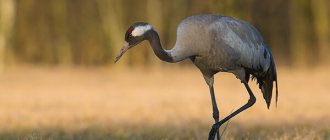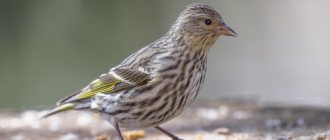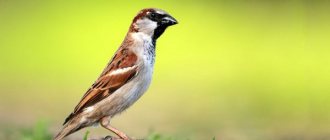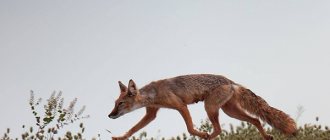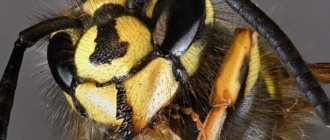- October 6, 2018
- Hunting
- Natali Michaelis
Wild boar is one of the most popular animals among hunting enthusiasts. Every hunter dreams of having a trophy in the form of fangs or the head of a wild animal on his living room wall. However, it will be difficult for an ordinary beginner to shoot a boar without knowing the behavioral characteristics of this animal, because hunting methods are developed on the basis of this information. We will talk about what a wild boar looks like and what habits it has in its natural habitat in our article.
Biological description
The wild boar (boar) belongs to the order of artiodactyls, the suborder of non-ruminants and the family of pigs. This mammal is very different from the ordinary domestic pig. It has a rather short but dense body, legs are much thicker and higher, which allows the animal to overcome long distances. The head is powerful, with an elongated long snout, the ears are sharp and erect. However, the most important advantage of the wild hog is its sharp, constantly growing fangs, which can serve as a formidable weapon against humans and wolves.
Appearance
The photo above will allow the reader to better understand what a wild boar looks like. The body of an adult animal is densely covered with bristles, which allows it to withstand the coldest winters. When the boar is in a frightened or alert state, the hair on the upper edge of the body forms something like a mane.
The color of a boar can have several shades: from black to brown-brown. In most cases, this depends on the breed or habitat of the mammal. In winter, under the boar's elongated hair, an additional layer of down grows, which further insulates the animal's body.
Gradually, the well-built body turns into a fairly short tail with a loose brush. Adults have a fairly developed front part, which allows them to quickly move over long distances. Weight ranges from 100 to 200 kilograms with a body length of up to 175 centimeters and a height at the withers of about a meter. Males are much larger than females, and their heads are also much larger.
Chun Chun
Next on the list of the largest wild boars is the Chinese boar Chun Chun. Farmer Chu Changiniz claims that he did not set a goal to raise a giant and did not pay much attention to the animal, but Chun-Chun continued to eat a lot and actively gain weight.
The weight of the boar almost reached a ton - the weight was 900 kilograms, and the length of the giant was 2.5 meters. A distinctive feature of the animal was its fangs, each 15 centimeters long. Due to its unusual weight, the hog lived only a few years, which contrasts greatly with the normal lifespan of pigs. With proper care, the animal can live up to 20. After the death of the animal, with the permission of the owner, they made a stuffed animal from it, which still remains one of the most valuable exhibits of the agricultural museum in Beijing.
Habitat
Now we have figured out what wild boars look like (photos will be given throughout the article). It's time to find out what kind of life this animal leads and in what places it lives.
The first known mentions of wild boar are in ancient manuscripts from East Asia. Scientists suggest that it was from here that the animals spread throughout the continent. It is worth noting that the appearance of the boar changed several times. Old individuals were much larger, had a larger head size and a different body color.
Today, these mammals have a fairly extensive habitat. Most boars are found in mixed and deciduous forests in the steppe and taiga regions. There are the most favorable living conditions here.
Classification and domestication
In ancient times, the range of wild pigs was much wider. Today, wild boars have completely disappeared in most places. On the territory of Russia, the animal can be found in Southern Siberia, Tien Shan, Transbaikalia and the Caucasus. The wild boar is usually grouped into four main sections, which depend on the region where these mammals live:
- Indonesian;
- eastern;
- Indian;
- Western.
Why did these animals become domesticated so quickly? The reason lies in their omnivorous nature and rapid adaptability to new living conditions. In addition, the boar is a social animal, so it is normal for it to gather in herds.
In the wild, there are up to three females for every male. Females with piglets, as well as numerous young animals, gather in large herds, but older individuals prefer to stay apart. The litter of a young and healthy female boar consists of 6 to 12 piglets. Young animals in most cases have a striped color, which allows them to hide among branches and leaves.
Boar and hunting for it
photo: Fotolia.com
The wild boar (Sus scrota L.) is similar in appearance to the domestic pig, which is its domesticated descendant. The body of a wild boar is more massive and muscular than that of a domestic pig. The front part of the boar's body is much larger than the back part. The head is large, wedge-shaped and elongated somewhat forward, with highly developed fangs, especially in old males.
The lower ones are sharp and triangular (like the bayonet of a Mosin rifle), directed upward and reach 24–26 cm in length; the upper ones are blunt and curved, sometimes so strongly that their ends are curved upward. The tusks of a boar are its formidable weapon and are highly valued by hunters as trophies. Females have fangs that are less developed, but they also skillfully use them in defense and bite strongly with them.
The boar's legs are short, relatively thin, but surprisingly powerful. The blow of a mortally wounded boar (lying down) is so strong that it breaks through trees as thick as an arm. The boar's body is slightly flattened on the sides, which allows it to easily pass through thickets of bushes and dense reeds without reducing its running speed.
The sizes of wild boars in different areas are not the same. For example, males in the Caucasus reach a length of up to 200 cm with a height at the withers of up to 120 cm. The weight of adult individuals in various subspecies ranges from 50 to 320 kg. The boar's hair is highly developed. By winter, the wild boar is covered with long, thick and elastic bristles (used by anglers as nods in winter fishing), split at the ends, which forms (in adults) a mane on the back.
Under the rough bristles, wild pigs have a thick undercoat. The color of the hair is mostly dark brown, sometimes with light ends. The undercoat is chestnut-brown. The fur on the legs is darker, often completely black. The coloring of born piglets consists of alternating dark brown and light longitudinal stripes, like a chipmunk.
Males reach sexual maturity at the fourth year of life, females at two years. The wild boar rut usually takes place in November–December. By this time, the cleavers have formed a kind of shell on their shoulder blades - the so-called Kalkan, 2-3 cm thick, which protects them in fights for the female, and also from buckshot and bullets from hunters.
Young females sometimes mate in early January. Therefore, in the fall, piglets weighing no more than 15 kg are shot. During the rut, bloody battles take place between males, in which boars often inflict serious injuries on each other. The strongest males drive away young and weaker boars from the females, and also drive away the mothers and piglets that previously went with them.
During the rut, males hardly feed and lose a lot of weight, not representing much value in terms of edibility of meat. After the rut, males, as a rule, retire and lead a solitary lifestyle. The piglets are again united with their mother and stay close to her until farrowing. Pregnancy lasts no more than four months. At the end of March and the first half of April, a pig usually gives birth to 6–7, and in some more mature ones, who are in the prime of life, up to a dozen piglets.
Before farrowing, the female makes a den in a secluded place, lining it with thick and warm bedding. In the first days of life, piglets are close to their mother. But very soon they begin to make transitions with her, sometimes quite significant ones. After 3–4 months, the piglets become reddish-brown, their coloring is somewhat lighter than adults and old individuals. Quite often, several females with piglets form a herd, and gilts driven away before farrowing also join it. Gilts live with the herd until autumn, then the males gradually separate from the pig herd and begin an independent life. Young females usually stay together until they become mothers themselves.
Wild pigs, being herd animals, sometimes gather in large groups. In 1991, in the closed zone of the Chernobyl disaster, I had to observe an amazing picture one night: in front of our car (we were forced to stop), for several minutes a huge herd of wild pigs ran across in a continuous stream.
Due to seasonal changes in food and living conditions, wild boars travel many kilometers. On their way, they easily overcome water obstacles and wetlands. In winter, especially with deep snow cover, wild boars have difficulty obtaining food. The hardest time is for young of the year and gilts. Lack of food sometimes leads to their death. Therefore, in organized hunting farms, animals are regularly fed in winter. And young animals are planned to be shot in larger numbers, trying to preserve the breeding stock.
By nature, wild boars are not vicious animals. When meeting a person, they try to hide unnoticed and never attack him first. But when there is a threat, for example, to the life of the piglets, the female boldly rushes to their defense. More than one page has been written about the danger a wounded and hunted boar poses to the life and health of a hunter. An angry boar rushes at the hunter with lightning speed. Although the boar looks heavy and clumsy, it runs nimbly and is quick in action. Enormous strength allows the cleaver to instantly cut the muscles on the hunter’s leg with one blow of its fangs; you can escape from the formidable fangs of the cleaver during its attack if at the last moment, when the boar is 3-4 meters away from you, you quickly jump to the side.
Having missed, the boar rarely returns to attack again. An accidental fall of a hunter during a wild boar attack can end in tragedy for the hunter. Since the cleaver stinks with its fang, with its head lowered, and can tear the muscles of the legs or abdomen. When chasing a wounded boar, you should remember that the boar can hide and rush at the hunter approaching the ambush site. Therefore, two hunters go to pick up the wounded boar. One follows the trail, and the other is behind and somewhat to the side, ready to come to the aid of a comrade at any moment. There are times when a hot and overly bold dog is hit by a wild boar and flies to the side with its belly ripped open.
The wild boar has well-developed hearing and sense of smell. Vision is somewhat weaker. For this reason, a boar downwind of a stationary hunter can approach a distance of 3–5 meters. Usually the boar is very careful. When feeding and during transitions, he is always on guard. He stops, listens, noisily sucking in air. Sensing a hunter or other danger, it tries to hide unnoticed. Boars have their own language. The voice of a calmly feeding boar is the well-known grunting sound; frightened or wounded females and piglets squeal shrilly; adult males, as the stronger sex, do not allow themselves to do this. When in danger, pigs grunt and snort in alarm. To defend themselves from attacking predators, males sniff loudly, and during the rut and fight with a rival, they even roar.
A pig is a pig. She, as people say, will always find dirt. For bathing, animals use various depressions filled with water. But they prefer dirty and clayey reservoirs. Water is of great importance in the life of a wild boar, and in search of it, it makes transitions no less than in search of food.
In Russia, wild boars are very widespread. They are common in the European part up to 60° northern latitude, in the Caucasus, in the Stavropol Territory and the Astrakhan Region. In Siberia, wild boars live in the entire eastern part of Tuva, in the southern part of the Irkutsk region, in Buryatia, in the Chita region and in the Khabarovsk Territory. They are also found in the Amur region and the southern half of the Primorsky Territory.
Wild boars prefer wetlands with thickets of reeds, reeds, cattails and other marsh vegetation. They also thrive in coniferous forests, especially cedar trees, as well as in black forests where there are oak groves. In the Caucasus, wild boars live in almost impenetrable forests and in forested gorges.
Being an omnivore, the wild boar still prefers easily obtained plant food, the nature of which varies depending on the season. Among the cultivated plants, wild boars love corn, buckwheat, millet and potatoes. They also enter wheat and barley crops. If there are melons nearby, they visit there too. With their raids, pigs cause significant damage to farmland. In search of larvae and worms, they rummage along the banks of rivers and lakes. Small rodents and snakes are also eaten by them; wild boars will not leave bird nests unattended (they eat eggs and small chicks).
According to its lifestyle, the wild boar can be classified as a nocturnal animal: at night it goes out to feed, and during the day it hides in hard-to-reach places and sleeps. He goes out to feed after sunset and returns for the day at dawn.
In the difficult conditions of a cruel winter, wild boars, not having time to get enough at night, are forced to look for food during the day. Therefore, they can be found returning for the day at 9–10 am. For lying down, wild boars build dens (gaino), which are very carefully covered with dry grass, reeds and reeds. Males sometimes make a den for themselves on an anthill, after tearing it apart.
Wild boars do not mind communicating with domestic pigs, even very close ones. In villages where pigs graze in the forest, there are frequent cases of them mating with wild relatives. For example, in the Kaliningrad region, after the expulsion of the Germans from the Baltic states, many semi-feral pigs remained in the forests, which, mating with wild ones, gave rise to a completely viable and fertile generation.
This is how we can briefly outline the biology and lifestyle of a wild boar, which is an enviable trophy for a hunter.
Victor Gurov February 5, 2014 at 00:00
Boar feeding
If you are still wondering what a wild boar looks like, then the photo in the next section will help answer this question for you.
What does a wild boar eat? In most cases, the diet is dominated by vegetation: mushrooms, acorns, berries, nuts, roots and plant tubers. In winter, animals are forced to feed on various carrion, bird eggs, tree bark and insect larvae.
If there is not enough food in the forest in the autumn season, wild boar will begin to visit farmland where grain crops, turnips, beets or potatoes grow.
When eating forest litter, wild boars quite often eat various larvae, pine caterpillars and chafers. Thus, they carry out a sanitary bypass of the forest, destroying pests and loosening the soil, which stimulates the growth of shrubs and trees.
Interested in what boar droppings look like? Pay attention to the photo below.
An adult boar can eat from 3 to 6 kilograms of food per day. The diet quite often includes fish, especially if the animals live near bodies of water. Water is also of great importance. With such a mass, an adult boar can drink up to 10 liters of life-giving fluid per day.
Young hunter
An equally remarkable encounter with a wild cleaver of abnormally large size occurred in 2011 in the American state of Alabama. This time, the hunter who managed to shoot the giant was a teenager, at that time the boy was barely 11 years old.
The capable young hunter, who had been trained from the age of 6 to track and kill animals, hunted with his father, but soon the trappers split up, choosing two different, parallel paths. The animal's trail led the boy to a cleaver, who was leisurely digging the ground in search of edible roots. For the boar, the appearance of a threat was unexpected and the young hunter managed to shoot before the cleaver reacted. The animal he shot weighed a little less than half a ton (490 kilograms), and the length of the carcass reached 3 meters.
Lifestyle
This mammal has not very developed vision, but its sense of smell is excellent. An adult boar can sense the scent of a person, carried by gusts of wind, at a distance of up to 400 meters. Remember that too strong odors (lotion, deodorant) can scare the wild boar and the hunt will end unsuccessfully.
Have you ever wondered what a boar's track looks like? The photos used as illustrations for the article will allow you to examine it in great detail, after which you will be able to use this knowledge on the hunt. The dug up ground is a clear sign that there are wild boars in the forest.
The boar is most active at night. At this time of day, he prefers to go out for a night meal and take water procedures. During the day, it settles in thickets of reeds or in swamps where dense vegetation grows. In such places there is always a supply of water, as well as shade to hide from the scorching sun.
Habits
The habits of the boar are quite interesting. For example, this animal is quite sensitive to temperature changes. Therefore, in order to avoid sunburn, and also to protect against insect bites, the boar is thoroughly smeared in mud. In this regard, the presence of a body of water nearby is an integral part of the life of mammals.
Also, the habits of a wild boar force it to stay away from people. He rarely approaches populated areas, but regularly makes forays into fields where corn and oats grow, especially at night, when all field work is completed.
Wild boars lead a sedentary lifestyle. They leave their shelter only to eat, especially in the summer. Then they return back to the reeds or grass to rest.
Habits may change with the arrival of cold weather and the first snow. It will be extremely difficult to meet this animal in the forest in winter, since high snowdrifts will interfere with its movement. By the way, despite its clumsiness, the wild boar is considered an excellent swimmer, which it actively uses to catch fish.
Precautionary measures
In order not to run into such a deadly animal as a boar once again, it is recommended to act as follows:
- Be as careful as possible and do not come close to a flock of wild boars. It's best to leave before the person is spotted.
- If you happen to stumble upon a piglet, you should keep in mind that the mother is definitely somewhere nearby.
- If tracks of a boar are found, it is better to go in the other direction, away from this pig trail.
- When a boar takes a person by surprise, there is no need to attack him. The best way out of this situation is to climb a tall tree and hide for a while.
Gon
The rutting period for wild boars occurs from December to January. At this time of year, adult males try to find a herd of females nearby by tracks, sounds and smells. During the rut, wild boars may return to the herd for some time, but after all individuals are fertilized, they will leave it again. As a rule, during this time the boar manages to fertilize from 3 to 6 females.
During the mating season, all males become incredibly aggressive towards humans and their fellows. If another male comes into the herd, a fight cannot be avoided. They will inflict terrible lacerations on each other with their sharp fangs until one of them gives up and leaves the herd.
Have you ever wondered what a female wild boar is called? The male is a boar and the female is a pig.
The duration of a pig's pregnancy is about 120-130 days. A few weeks before the onset of labor, she leaves the herd in search of a secluded place. After this, the pregnant female builds herself a bed, which is very similar to a bird's nest from dry grass.
A pig can give birth to from 5 to 15 piglets, each of which weighs up to 1 kilogram. Their fur is brown or black with longitudinal white stripes. This color allows babies to be protected from attacks by predators, since they are completely hidden with the foliage. Hunters are strongly advised not to approach the female's den at this time, as she may be aggressive towards intruders.
Reproduction
As a rule, a female gives birth to five to seven cubs, which she carefully cares for. Pregnancy does not last long - no more than 5 months. The body weight of a newborn is only 1 kilogram. The cubs are born in mid-spring, sighted, with a striped coat color.
On the tenth day of life, piglets are able to cover considerable distances, following their parents. They also begin to eat vegetation and learn to get the most juicy and tasty food.
Already at the age of one year, small boars weigh more than 50 kg. Thus, in the first year of life they gain more than 20 kg per season. At the same age, they lose their special coloring, acquiring the dark hair of adult boars.
Having reached the age of one and a half years, the piglets leave the “parental home” and go in search of a new home. They form new herds, learn to live independently and take care of each other.
Natural enemies of the boar
Most wild animals have their natural enemies. Among boars, this role is taken on by bears, wolves or lynxes. As a rule, wolves attack one wild boar in packs. First, they jump on top of the boar and knock it to the ground, after which they all attack the victim together.
Lynx tries not to attack adult boars, preferring to them young individuals who have strayed from the herd. The predator pounces on the prey, inflicting fatal wounds on it with its claws and teeth.
But the bear is considered the most terrible enemy of the wild boar. This huge animal is capable of squeezing the cleaver with its powerful paws, breaking all the bones. In most cases, the animal dies this way, since the bear rarely uses its teeth or claws in an attempt to strangle its prey.
Features of hunting
Hunting wild boar is one of the most dangerous activities among hunters. In most cases, such an event is carried out by small groups of people of 3-4 people who hunt wild boar by driving. There were frequent cases when hunting a wild boar alone ended tragically. Do not forget that the weight of this animal can reach up to 200 kilograms, so it will be able to fight back its offender. In the photo below you can take a close look at what a wild boar looks like up close.
As a rule, the beginning of the hunting season depends on the habitat of the wild boar. In most regions of Russia, shooting these animals is allowed in the autumn season (from August to January) with the appropriate license. Only old males or young animals are allowed to be killed. Permission to shoot females must be obtained on an individual basis. In some regions, the wild boar population is so small that it is considered a protected animal.
Interesting facts about the animal
- In captivity, animals exist less than in nature. The average life expectancy is 14 years.
- Females reach sexual maturity at 1.5 years.
- According to Miller's dream book, a boar in night dreams is a sign of great luck.
- It is important for hunters to know how to distinguish a female from a male, because killing a sow can result in a serious fine.
- Boars have an excellent sense of smell, but their eyesight is poor. An animal may not see a person from a distance of 15 meters.
- In ancient times, hunting these artiodactyls was a test for young men. Only by killing a boar did a guy become a man.
- The bristles of the beast are used to produce toothbrushes, combs and paint brushes.
What is the difference between a boar and a wild boar?
What are the fundamental differences between a wild boar and a boar? Formally, nothing, since both of these names refer to the same animal. However, “cleaver”, “hog” and “boar” are colloquial names and are used mainly in common parlance, and “boar” is a book word. Most hunters prefer to use colloquial variants in their vocabulary because they sound more threatening. It can also be assumed that boars are called older individuals, and wild boars are younger ones.
This question also concerns what the female boar is called. Many people don't realize that the term "pig" applies to both domestic and wild animals.
Keeping at home
Some hunters prefer to breed wild boars at home. This is quite an interesting and profitable activity, since wild boar meat differs in taste from domestic pig meat.
As a rule, the feeding period lasts from 5 to 7 years. To keep them, you will need to use exactly the same pens as for ordinary pigs. Domesticated mammals happily eat whatever is given to them. Quite often, farmers prepare special porridges and grain stews for them, since this is a fairly filling and economical feed option.
Despite the fact that pigs' ancestors are considered wild animals, they will treat their owner quite well. They respect and love the people who care for them, and will also protect their owner in case of danger, just as they would protect their offspring in the wild.
Wild boar meat kept at home has an unusual, rather mild taste with a slight sourness. It was loved by many gourmets several centuries ago. Have you ever seen what boar ribs look like roasted in the oven? The photo above will give you an idea of how delicious this dish is. Be sure to try it sometime!
Types, photos and names
There are many different types of wild boars in nature; below we will describe the most interesting of them:
European boar
The European wild boar is the most common of the wild boars. It could also be called the common wild boar. Everything that we wrote about wild boars primarily concerns the European wild boar.
Warthog
Surely we all remember from childhood the bright hero from the Disney cartoon “The Lion King,” a warthog named Pumbaa. A characteristic feature of a real warthog is the presence of subcutaneous fat deposits on the face, reminiscent of warts themselves, hence the name of this boar. Also, the tusks of a warthog are more curved than those of a common boar. Lives in Africa.
River brush-eared pig
Found in central Africa, the brush-eared pig flaunts its colorful outfit. Its fur is bright red and there is a white stripe on its back.
bearded pig
A very interesting subspecies of wild boar or wild pig is the bearded pig, which lives in the mangrove forests of Indonesia. It differs from its relatives in its more athletic build and relatively small size, so the weight of a bearded pig does not exceed 50 kg.

